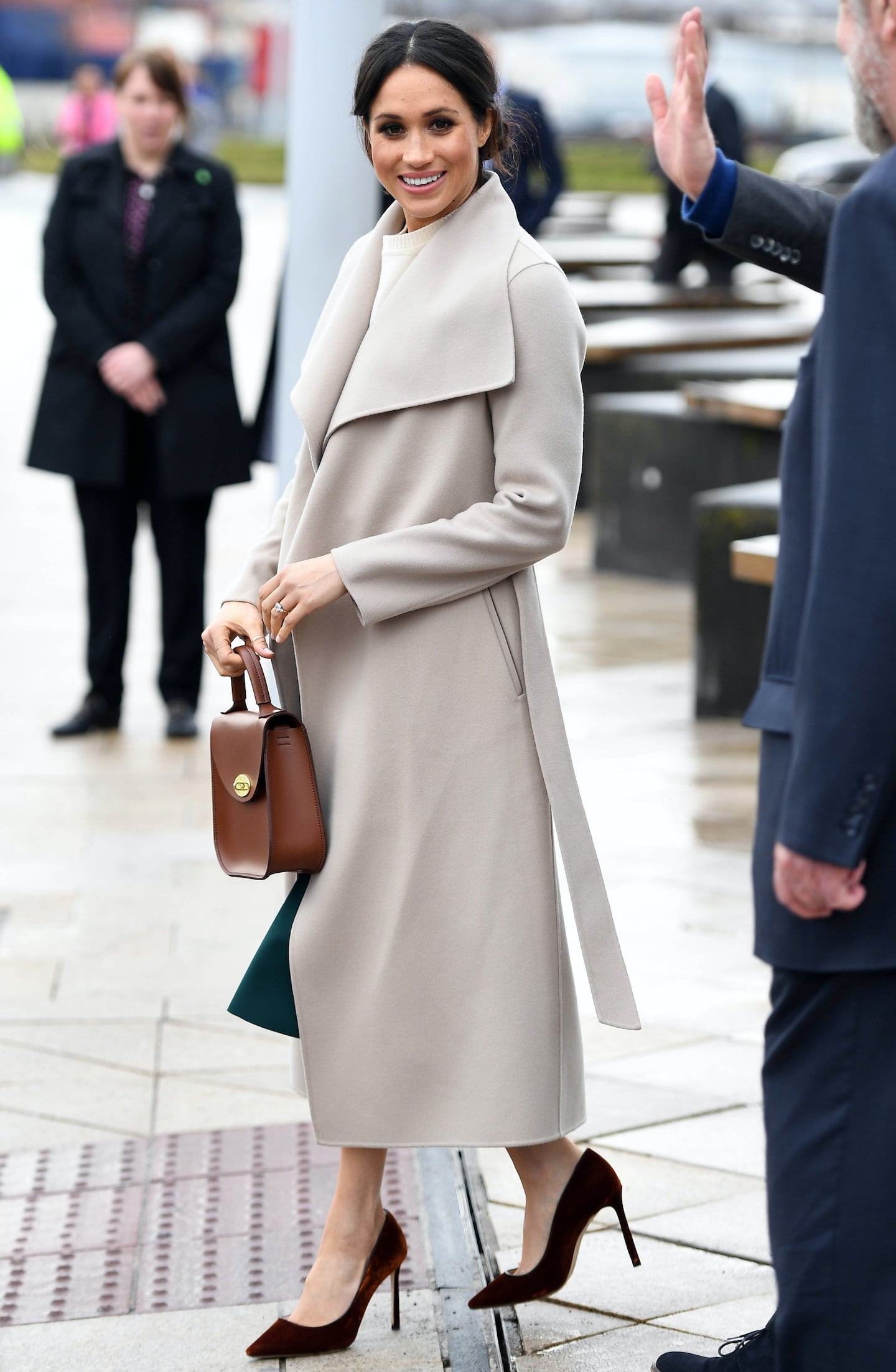
The Business of Fashion
Agenda-setting intelligence, analysis and advice for the global fashion community.

Agenda-setting intelligence, analysis and advice for the global fashion community.

VANCOUVER, Canada — A nod from the Duchess of Sussex is helping Aritzia attract global exposure.
Shares of the Vancouver-based fashion retailer touched a 52-week high on Thursday as first-quarter comparable sales growth reached 10.9 percent, compared with 9.3 percent in the same quarter last year. First-quarter adjusted earnings per share and revenue also topped analyst estimates.
"Excellent Q1 same-store sales growth highlights just how well consumers (including the newest member of the royal family) are responding to Aritzia’s" products, CIBC World Markets analyst Mark Petrie said in a note to clients.
Following the Invictus Games trials at the University of Bath in April, Markle was seen wearing an Aritzia trench coat. That same month, Harper’s Bazaar called Aritzia Markle’s go-to spot "for most of her accessibly-priced pieces."
ADVERTISEMENT
"In particular, the strong growth in the US — in-store and online — proves out a highly differentiated and on-trend concept with a growing following," Petrie added. CIBC thinks Aritzia has "many levers" to maintain outperformance ahead.
Aritizia sold 25 million shares for C$16 a piece during its initial public offering in September of 2016.
By Michael Bellusci; editors: Courtney Dentch and Scott Schnipper
Related Articles:
[ Meghan Markle: The Biggest Influencer of All?Opens in new window ]
[ Aritzia Raises $400 Million in Canada’s Largest IPO of YearOpens in new window ]
As the German sportswear giant taps surging demand for its Samba and Gazelle sneakers, it’s also taking steps to spread its bets ahead of peak interest.
A profitable, multi-trillion dollar fashion industry populated with brands that generate minimal economic and environmental waste is within our reach, argues Lawrence Lenihan.
RFID technology has made self-checkout far more efficient than traditional scanning kiosks at retailers like Zara and Uniqlo, but the industry at large hesitates to fully embrace the innovation over concerns of theft and customer engagement.
The company has continued to struggle with growing “at scale” and issued a warning in February that revenue may not start increasing again until the fourth quarter.